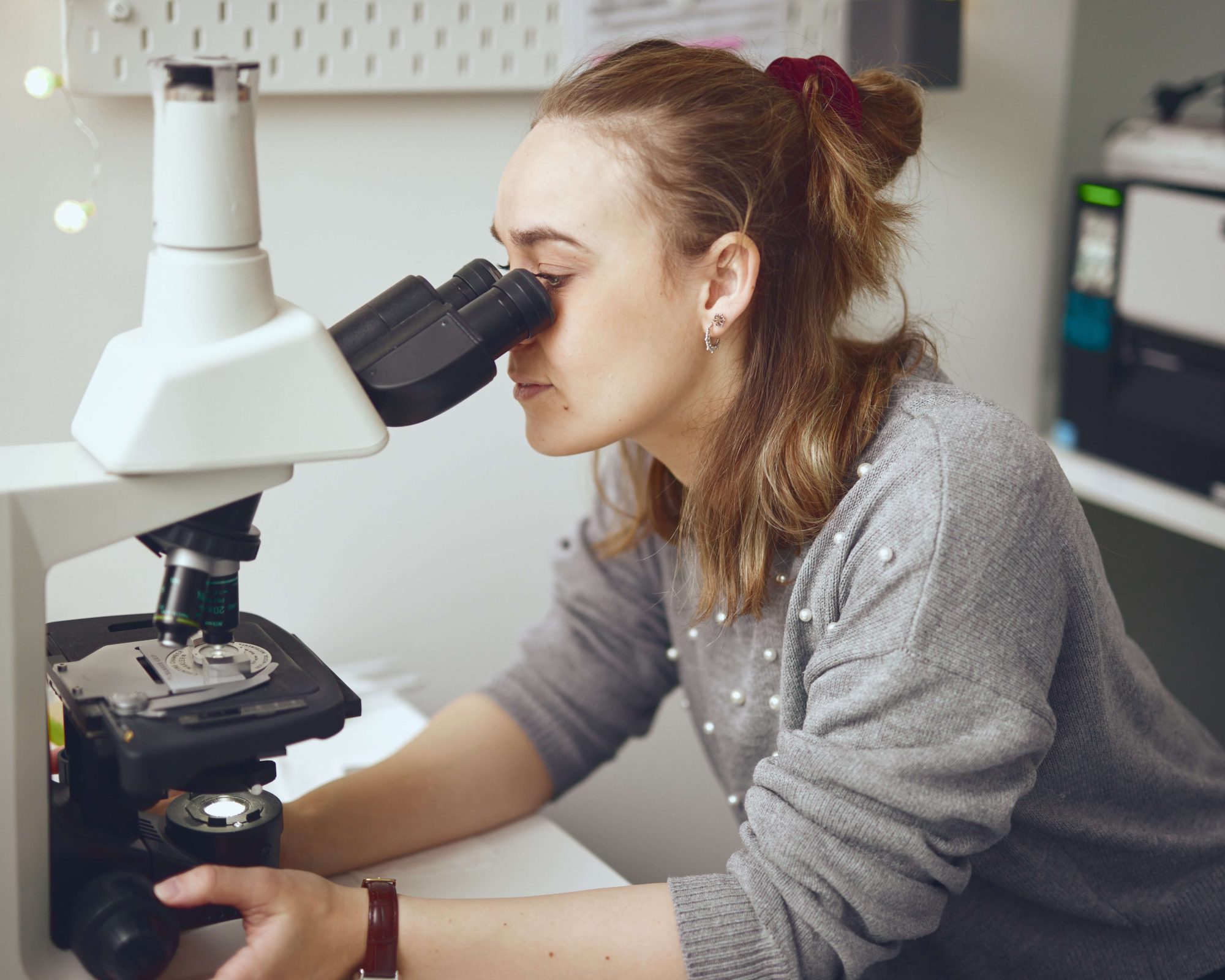What Is Fake and What Is Real About Sperm?
Sperm plays a crucial role in the creation of life. Despite its biological significance, sperm is often surrounded by mystery and a range of myths that have circulated for decades. We believe it's important to distinguish between myths and facts about sperm to promote understanding. By dispelling the misconceptions surrounding sperm, we can achieve greater openness and knowledge on this topic and encourage a more informed approach to reproduction. In this article, we have compiled things you may not have known about sperm.
Facts About Sperm and Sperm Cells
Sperm consists of sperm cells and seminal fluid. The seminal fluid primarily contains water and proteins, making the fluid viscous. It also contains enzymes, nutrients (fructose), and various minerals and antioxidants. The seminal fluid is pH-neutral, possibly slightly alkaline to protect the sperm cells from the acidic environment in the woman's vagina. Sperm cells are produced in the testicles through a process called spermatogensis. Sperm cells make up only a small part of the total seminal fluid.
A typical ejaculation can contain millions of sperm cells, which are incredibly small - the cell's head, where the genetic information (DNA) is located, is only 3x5 micrometers, and the tail is about 50 micrometers, smaller than a dust particle. This means they are invisible to the naked eye. They have a unique structure, with the head of each sperm cell carrying the genetic information (DNA), a midsection providing energy for the movement, and a tail that helps them swim towards the egg during fertilization. Mature sperm cells swim at approximately 3 milimetres per minute.


What Does a Sperm Cell Look Like?
Some sperm cells may have two heads, some two tails, some may have a micro head, some an excessively large head, and some may have other abnormalities. In fact, only 4-8% of sperm cells are considered morphologically (=appearance-wise) "correct" or "normal". Whether it is always a morphologically normal sperm cell that fertilises the egg is challenging to determine for obvious reasons. However, morphologically normal sperm cells are considered the most suitable.
The primary function of sperm cells is to fertilise the egg and form a zygote (a fertilised egg). Sperm cells swim through the female reproductive tract and can survive for several days, possibly up to a week in the right environment. Sperm cells have a long journey to reach the egg, and most sperm cells never reach it. Fortunately, only one sperm cell is needed to fertilise the egg.

Myths About Sperm
Many myths about semen have been passed down through generations, contributing to creating an aura of mystery around sperm. Some of the most common myths include claims that sperm contains something that can cure acne, improve the appearance of the skin, or act as a miracle cure for various diseases. Other myths suggest that sperm has special nutritional benefits. It is important to note that many of these claims have no scientific basis and should be approached with a healthy dose of skepticism.
The spread of myths about sperm can have negative consequences. Misinformation can lead to misguided perceptions of reproduction and sexual health. Myths about sperm can also contribute to stigmatisation and taboos surrounding sexuality and reproduction. This can impact openness about sexual matters and limit access to accurate information and contraception.
Did You Know That...
- A typical sperm sample contains between 15 million and 200 million sperm cells per milliliter of semen?
- Even men with fertility problems can produce millions of sperm cells?
- A high number of sperm cells does not necessarily guarantee fertility, and a low number does not automatically mean there will be fertility problems.
At Born, we examine the sperm of donors by determining the concentration of sperm cells and the motility and movement pattern of the sperm cells.
If you're curious about your sperm quality, we offer free and non-binding sperm evaluations nationwide at Born.
According to WHO guidelines, a sperm sample is considered normal if it contains a minimum of 1.5 ml of semen with a minimum of 15 million sperm cells/ml, of which a minimum of 40% are motile (movable), and a minimum of 32% are progressively motile (swimming forward).

Frequently Asked Questions about Sperm and Semen
A man produces between 100 and 300 million sperm cells daily. The sperm cells are stored in the epididymis for about two weeks, after which they are either released through ejaculation or broken down by the body. This ensures a constant supply of sperm cells for reproduction. Sperm cell maturation takes a total of 72-74 days, and it is only in the last 10-14 days that the sperm cell is stored in the epididymis.
There is no set age for when men stop producing sperm. Some men can continue to produce sperm throughout their lives, but there is a correlation between a man's age and a declining sperm production. This means that some older men may experience a reduction in the number of sperm and motility compared to younger men. However, it is important to note that there are individual differences, and not all men will experience a significant change in their sperm production with age.
No, there is a difference between semen and sperm. Semen is a mixture of different components produced by different glands in the reproductive system. Approximately 90-95% of seminal fluid comes from the seminal vesicles, while the rest is produced by the prostate and Cowper's glands. Seminal fluid contains enzymes, fructose (sugar), vitamins, minerals and other nutrients that support the survival and motility of sperm cells.
Sperm cells are the actual male reproductive cells found in semen. They are small, only about 50 micrometers long including the tail, and have a unique structure with a head containing genetic information (DNA), a midsection providing energy for movement, and a tail that helps them swim toward the egg during fertilisation.
However, semen and sperm are always together, but their quantity varies significantly. Normally, each millilitre of semen contains between 20 and 300 million sperm cells. An average ejaculation contains about 1 to 5 millilitres of semen, meaning that between 20 and 1.5 billion sperm cells are released during ejaculation.
Sperm cells are not formed suddenly but are a continuous process in the male body. The body constantly produces new sperm cells. However, from their formation to maturity, it takes about 74 days.
No, "sperm" and "semen" do not refer to the same thing, but they are closely related. "Sperm" refers to the male reproductive cells themselves, also known as "sperm" or "spermatozoa".
"Semen" refers to the total fluid released during ejaculation. It consists of a mixture of sperm cells, which make up only a small portion of the fluid, and various fluids and nutrients from seminal vesicles, prostate and Cowper's semen.
Yes, semen can have different consistencies, and it can vary from person to person. The consistency of semen can be influenced by various factors, including hydration levels, diet, age, and overall health.
Experiencing more viscous semen does not necessarily mean there is anything wrong. Some men may have semen with a more fluid consistency, while others may have thicker or more gel-like semen. Variations in semen consistency are normal and can be attributed to different factors.
It is also important to note that semen consistency can vary over time for the same individual, depending on factors such as stress, hormonal changes, and sexual activity.
Since semen consistency can vary, it is generally nothing to worry about unless there are drastic changes or signs of underlying health issues. If you experience concerns, it is always a good idea to consult a doctor or specialist for a thorough assessment.
There are various factors that can affect sperm quality, such as smoking, diet, exercise, heat, etc. However, a man's sperm quality is primarily genetically determined. We have created an article describing what you should be aware of if you want to improve your sperm quality. You can read it here.
We also offer free and non-binding sperm evaluations at all of our locations.
Some men ejaculate once or twice a day, while others may do it four or five times. It depends on their daily sperm production and the amount released with each ejaculation.
No, that is not correct. Only one sperm cell can fertilise the egg. When the sperm cells come into contact with the egg, they attempt to penetrate its outer layer, also known as zona pellucida.
After a sperm cell has penetrated the egg, zona pellucida typically prevents other sperm cells from entering. This is called the zona blockade, ensuring the formation of only one zygote and avoiding the development of multiple embryos from different sperm cells. The zygote can divide and form identical twins, but it is still only one sperm cell that has fertilised the egg. In case of fraternal twins, two eggs are released during ovulation, each fertilised by a different sperm cell.
A large number of irregularly shaped sperm cells are referred to as "abnormal" or "having abnormal morphology." The shape and structure of sperm cells are crucial for their ability to move efficiently and fertilise the egg. When sperm cells have an abnormal or irregular shape, it can impact their ability to reach and penetrate the egg.
If a significant proportion of sperm cells have irregular shapes, it can negatively impact fertility and reduce the chances of successful fertilisation with one's female partner. Irregular shapes may include sperm cells with tail or head abnormalities or a combination of various abnormal traits.
Do You Want to Be a Sperm Donor at Born?
Book an appointment and become a sperm donor today!
